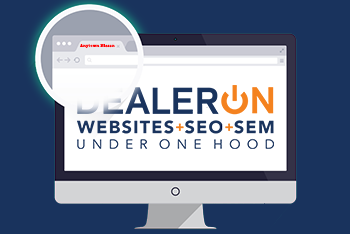

Today, we’re going to get a little technical with it. We’re talking about optimizing your website for local signals, and we’ve got 6 specific spots on your website to focus on. If you didn’t know that having a solid Local SEO strategy was crucial to your visibility in the search engines, then you might want to read this article first. And if you’re not sure whether your website even needs SEO to begin with, then check this article out.
Let’s Get To It
The basic idea is that Google can only fit so many search results onto their pages, and the sheer amount of competition out there means that you need to be on Page 1 if you want people to find your business via a search. And Local SEO is all about dialing in your SEO strategy so that your website is optimized for local searches. Just think about the difference between ordering pizza online at your office and ordering it at home. If you search for “pizza delivery,” Google knows to show you results nearby and will change the results to reflect your location.
That means your website needs to be sending “local” signals to Google and the other search engines indexing your site. What kinds of local signals? If you guessed City, ST information, then you guessed right! Where should it go on your site? Glad you asked.

1. Title Tag
Instead of thinking about this like a snippet of code (which it is), look just above the URL bar of your website. That short little description is a HUGE part of how search engines weight your page for local relevance. Here’s a tip, though: don’t waste this valuable space by putting your business name. Since it belongs to you (and nobody else), there’s no need to optimize for it. Instead, put keyword phrases there, as well as your City, ST information as well. An example might be, “Affordable A/C Repair in Dallas, TX | Same Day Service | Johnson A/C Heat Inc.”
2. Content
This one might seem obvious, but you need to include your City, ST information in the actual content of your website pages. In the past, this metric was measured by keyword density, but not anymore. After the Hummingbird update, Google started evaluating content on how natural & conversational it is, so make sure your City, ST info is worked into your content in a conversation fashion.

3. Page URL
Depending on how your business is structured, you may not actually have any control over your URL (e.g., franchises). However, if you do have the option to customize your URL, then you can work your City, ST info in to boost your local signals. For example, using the same fictional business as above, you might have a page like: www.johnsonacrepair.com/ac-tuneup-dallas-tx.
Pro tip: Use a 301 redirect for old URLs that still have values, so you don’t lose out on any links pointing to those pages.
4. H1 Heading
At the very top of your page, there’s probably large text that looks like a headline. That’s your H1, and it works the same way as a headline does in a magazine — it provides a brief summary of what the page/article is about. It’s not a full-blown sentence, but it’s not 1-2 words, either. A good H1 will have your City, ST information, along with your targeted keyword phrase.

5. Image Alt Text
A picture says 1,000 words, but the problem is that Google can’t just guess what an image is without some kind of description. Your alt text is how you tell Google and other search engines what your picture is about, which means it’s a prime candidate for your City, ST info. Every single image on your website ought to have an alt text description, though not every image needs to include the City, ST info.

6. Meta Description
In the days of SEO past, your site’s meta description was a factor for relevance. However, we now know that Google doesn’t consider it in its algorithm when ranking sites based on local relevance. However, that doesn’t mean it’s obsolete. Same as with your page content, your meta description ought to be conversational in tone, and not just keyword-soup. And, hey, if you’ve a conversational blurb about your business that naturally includes your City, ST info, then your meta description is yet another place for local optimization.
Get Smart, Get Local
So, there you have it. The 6 essential places you need to be including your City, ST information for optimal local relevance in the search engines. Is this a formula for success, guaranteed to launch you to the 1st page of Google? No, that’s now how SEO works. But is the result of some serious studying and brainpower from the SEO experts at DealerOn? Absolutely. And, if you didn’t know, our Director of Search and Social, Greg Gifford, is one of the 40 local search experts that Moz consults each year to do their Local Search Ranking Factors study, which is their best approximation of Google’s coveted algorithm.
Want some more awesome Local SEO tips? You’re in luck, because Greg actually wrote a whole book on it! It’s being released in sections, and Part I is available here or you can just fill out the form to the right to get your free copy.




Thanks for sharing this blog post…! Very Helpful & informative blog post that you have shared with us. In SEO the content is major part of website.